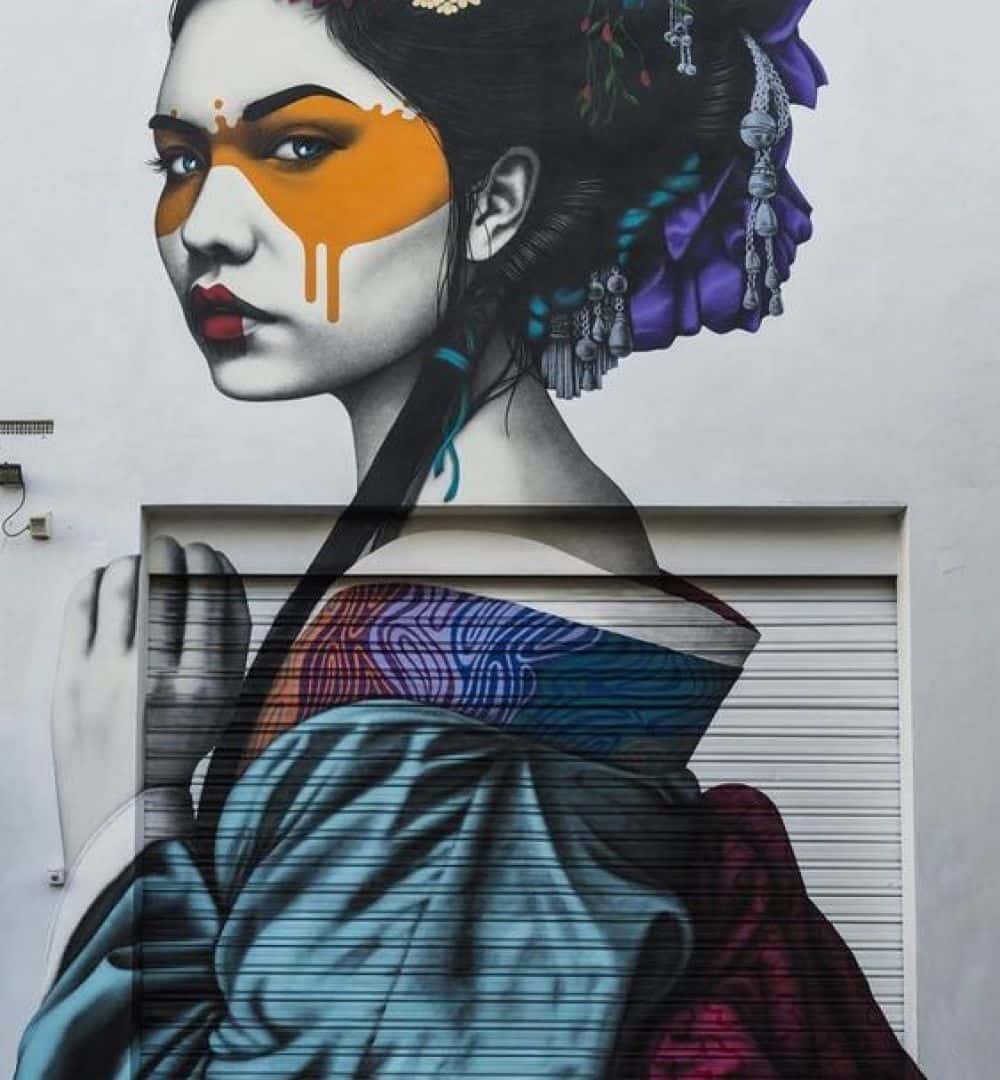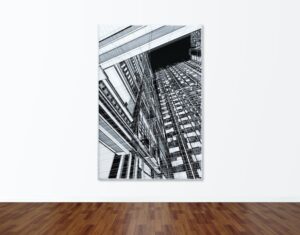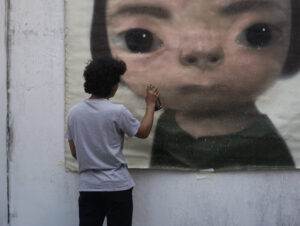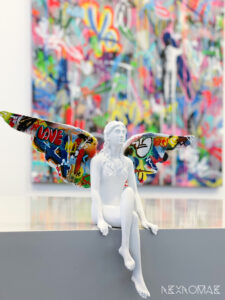Spanish artist Rafa Macarron is a young self-taught artist. His work leaves a touch of dreamlike influences and childish reminiscences. Despite the drama and deformity in his characters, the scenes portray tenderness, kindness, and harmony.
I recently caught up with the talented Rafa Macarron and talked about his artistic influences, inspirations, and plans for 2022.
Rom Levy: To begin, can you tell me a little about yourself and your background?
Rafa Macarron: From a very young age I have had a pencil in my hands. When I was 4 years old, I traveled with my parents to Paris coinciding with the inauguration of the Picasso Museum. When I entered one of the rooms I asked for a notebook and colored pencils. I spent the whole morning trying to understand what was in front of me. At the age of seven I used to make drawings full of color, animals or people taken out from some unknown world. By the time I was supposed to go to college, it was the Spanish painter Juan Barjola who encouraged me not to apply to the Academy of Fine Arts.
My studies as a physiotherapist have helped me a lot to know the human anatomy. I know the structure of the body perfectly. Afterwards, I started trying deformations and saw that they worked very well. It’s a bit like creating your own body characters, each with their own soul.
Cycling has also provided me, not only with the desire to go beyond, but also the solitude, freedom, and also many landscapes, which have influenced my painting so much. When I used to ride a bike, I entered the same state of flow that I reach when I paint. I could be painting for eight or ten hours nonstop and not realize the passage of time.
Who and what inspires your work?
A small sunrise, the time I spend with my children, a walk with the dogs… To look at the small, ordinary, and daily details. It is very important to me and for my practice, to feel, perceive and keep painting to learn how to create new work. those are the little things that inspire me.
Who are the characters in your paintings?
The characters come out of my everyday life and I take them out of context. They could be individuals living with us. When I create them, I always like to imagine where they come from, what they do, where they go, what life they have…
It is clear to me that I want to speak about life on the street, the everyday life, and my own existence. And I want to speak about these things with humor, more white than dark humor, more compassionate than cruel.
I also like that the characters relate to the viewer, and I play with the formats and scales. I go from a large portrait, where the contact with the figure is direct, to panoramas in which dozens of characters seem to be starring in multiple scenes simultaneously.
Although your subject engages in daily human activities and has human resemblance, they have a more cartoonish quality. What do you aim to deliver through that, and do your subjects stand as separate entities from ordinary people?
My characters don’t go towards the caricature. I flee away from all kinds of cartoonish ornamentation. They are born from a fantastic, surreal, and expressionist figuration. I consider them hybrid characters that are closely related to my admiration for Dubuffet, Bonifacio, and Alfonso Fraile. My characters live in a transcended daily life, clean days, sunsets, and fresh air.
What can you tell us about the flat characteristics of your work?
I have always liked to transgress reality and invent like-cosmic spaces that relate to the characters. With flat backgrounds I manage to enhance the figure, and thus give more prominence to the character. When it comes to making more worked backgrounds, as it happens with the beach-scene paintings, illusions of perspectives are generated, it happens the other way around as in with the flat background paintings. I create the background and then I place the figure. I use the extremities of the figures, textures, or background elements to break with the flatness and generate volumes, textures, and a sense of perspective. Colors also help me create atmospheres, like when I use magentas to generate warmth.
The materials used in my painting give me total freedom of expression. The spray gives modernity, dynamism, and color. The pencils and the marker create the weft, the waxes, the acrylics and the gouaches, nuanced transparencies and the oil brings complexity.
When I saw the oeuvre you exhibited in your first solo show at CAC, the first artist that came to my mind looking at the paintings was Picasso and when I saw the sculptures, the first artist I thought of was Salvador Dali. Do they influence your work? How do cubism and surrealism come together with expressionism in your art?
Picasso of course. I admire Picasso’s work much more than Dalí’s, for me he is the painter par excellence, but it is true that the sculptures can be a little like Dalí’s work because of my interpretation of the shapes of dogs. But my painting has expressionist features for the immediacy, the stroke is direct, even though I do a lot of sketch work and previous study.
Following up on my last question, how does your work relate to art movements?
I have had a very direct relationship with the Spanish painting, I have practically grown up in the Prado Museum, the best art gallery in the world. I am very proud to be part of Spanish painting tradition. Goya’s black paintings have always moved me, and of course Las Meninas by Velázquez, which I consider the best work.
My parents are both architects, and I feel that architecture has a very important relationship with my work. I have traveled a lot to see art and have visited fairs and museums around the world. I think everything I see influences me in some way. But if I have to mention specific movements, I would mention El Paso Group in Madrid, the New Figuration or the American Abstract Expressionism as movements that have been able to influence me.
I look at your work, and for a moment, I am dwelling in the ordinary moments in life, in a peaceful sense. What do you aim to deliver to the viewer?
I invite the viewer to look at thigs differently as I’ve mentioned it above. I’d like the viewer to relate to my interpretation of reality and what surrounds us. I hope they experience my painting and its characters the same way I do, asking themselves: who are they? What is their life like? Where do they come from and, where do they go?
I am interested in the ephemerity of paintings, do you view your own work as precious? If you are unhappy with a work, do you tend to destroy it or would you rather put it in storage for a while and alter them at a later date?
No, if something doesn’t convince me, I destroy it. I don’t like to look back, I’m not capable.
How does being a self-taught artist affect your style? Do you think it is liberating, or was it ever constraining?
It’s always liberating.
Did you ever paint a mural or have any interest to do so in the future?
I’ve never been interested, really.
What’s next for you in 2022?
The truth is that I am very excited because many interesting things are coming up in 2022. I’m going to have a show in Los Angeles with Nino Mier gallery, I will participate in Arco Madrid and many other projects that I still cannot talk about, but that I find very exciting.









































comment